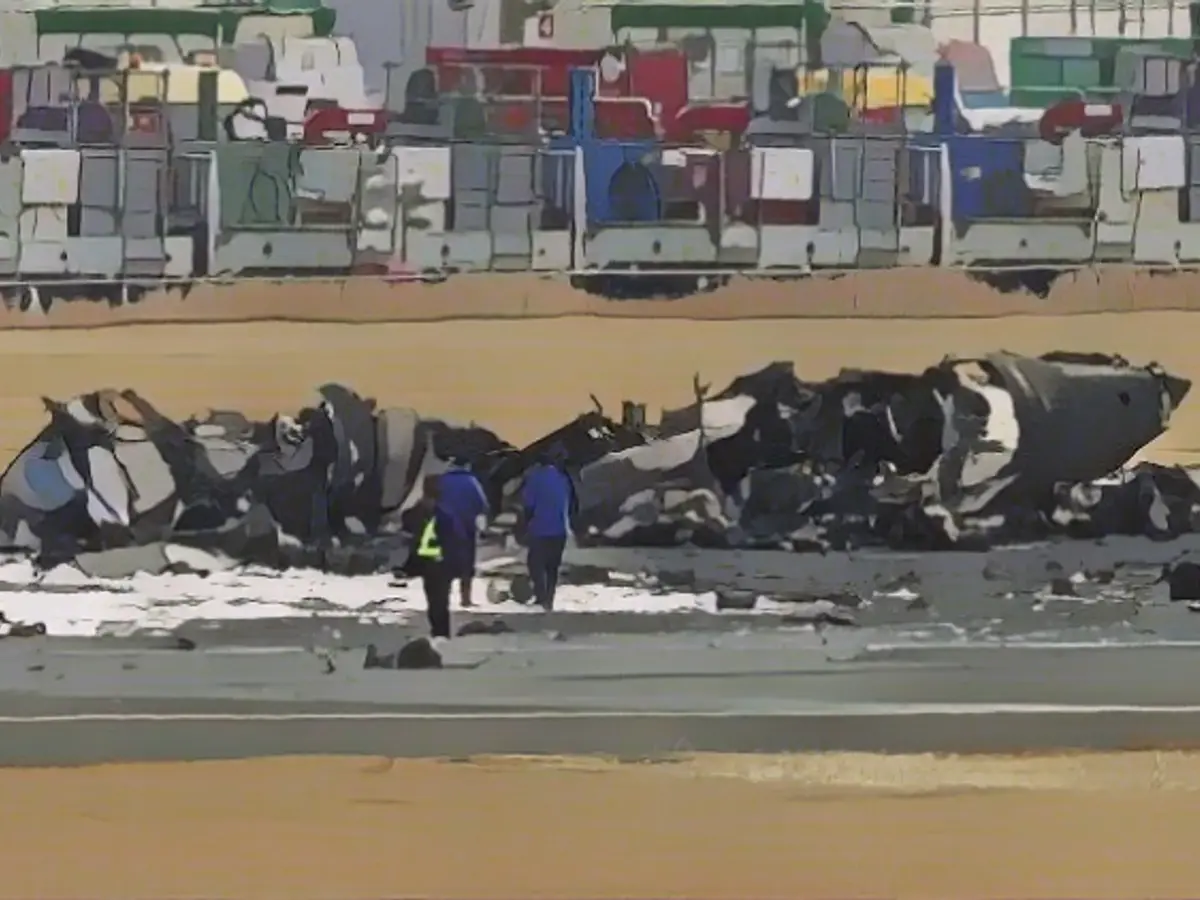Coast Guard jet allegedly taxied onto runway without permission
Who is responsible for the plane crash at Tokyo airport? Communication with the tower is supposed to prove that the pilot of the Coast Guard plane taxied onto the runway without permission. The accused, on the other hand, has his own version of events.
The fatal collision between a Japanese passenger plane and a Coast Guard aircraft at Tokyo's Haneda Airport is probably the result of a human error. As the Japanese news agency Kyodo reported, citing the Ministry of Transport, the Coast Guard plane did not have permission to take off and land on the runway. This was evident from the communication data between the aircraft and air traffic control.
The Japan Airlines (JAL) passenger plane had permission to land, while the Coast Guard plane received instructions to go to a spot next to the runway. The NHK television station reported, citing a source in the Ministry of Transport, that an air traffic controller had instructed the Coast Guard plane to wait off the runway.
However, the pilot who survived the accident made a statement to the contrary. He told investigators that he had been given the green light to land on the runway where the collision occurred.
A Japan Airlines (JAL) passenger plane had collided with the Coast Guard plane immediately after landing the previous day. Both caught fire. While all 379 people on board the Airbus A350 passenger plane were able to escape the burning aircraft without life-threatening injuries, all help came too late for five people on board the Coast Guard aircraft. Only the pilot of the Bombardier DHC8-300 came out of the plane injured.
Passengers on the airliner had described on Tuesday how they had left the already burning aircraft via emergency slides and spoke of a "miracle". Aviation expert Doug Drury from Central Queensland University in Australia said that according to regulations, airlines must be able to evacuate all occupants of their aircraft within 90 seconds. "The crews practise this quite frequently in simulations," said Drury. A decisive factor in the smooth evacuation of the JAL aircraft was certainly "that nobody tried to take their luggage on board".
Investigators are looking into the background to the accident. According to the aviation safety authority, the flight recorders of the Coast Guard aircraft have been recovered and the search is still on for the black boxes of the airliner. Witnesses are also to be questioned. The aircraft manufacturer Airbus announced that it would be sending a team of specialists to help with the investigation.
Read also:
- Floods: water levels remain critical in many places
- Snow chaos further restricts Bavaria
- Continuous operation in the flood areas
- Flood situation remains tense in many places
- Despite the unfortunate incident involving a Coast Guard aircraft and a Japan Airlines (JAL) plane at Tokyo's Haneda Airport, international airlines continue to operate in Japan, with strict safety protocols and evacuation drills to ensure passenger safety.
- As the investigation into the accident at Tokyo's Haneda Airport unfolds, several Japanese airlines, including Japan Airlines (JAL), have implemented additional safety measures, including double-checking runway permissions and communication with air traffic control, to avoid any future unfortunate incidents.
- Regardless of the ongoing investigation into the accident in Tokyo, major airlines like Japan Airlines (JAL) continue to fly from Tokyo's Haneda Airport, with a commitment to maintaining high safety standards and ensuring the safety of their passengers and crew, understanding the importance of air travel to international connectivity and tourism in Japan.
Source: www.ntv.de






